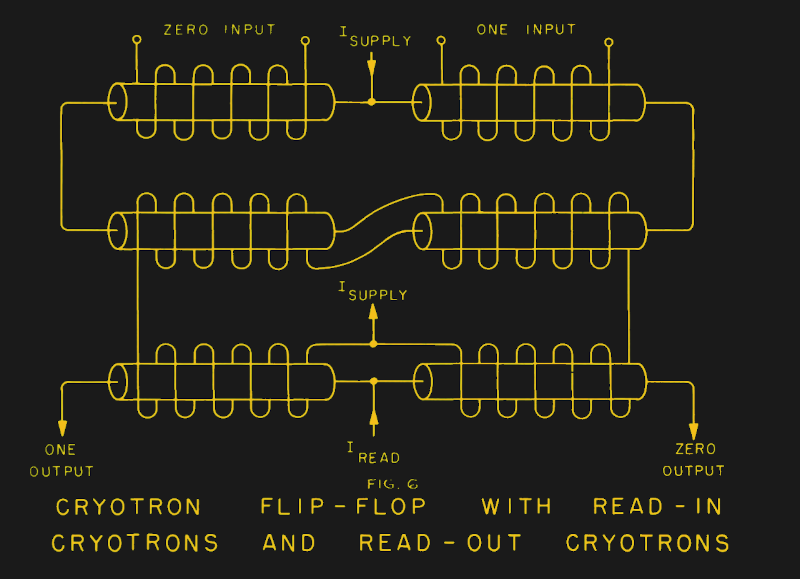[Sean Haas] is a “dangerous freelance historian,” and his recent talk at the Vintage Computer Festival in Southern California covers the cryotron — a strange detour on the road to computers circa 1956. The NSA wanted a computer to break codes, but in 1956, there wasn’t much to pick from, especially since they wanted a very fast computer.
As you might expect from the name, a cryotron depends on superconductivity. The original device was a tantalum wire wrapped with a niobium wire coil. When the device is soaked in liquid helium, both wires become superconducting. The tantalum wire can carry way more current in that state unless the niobium coil generates a magnetic field, which kills the wire’s superconductivity. On the plus side, you have a relay-like switch that works with no moving parts. On the negative side, you need liquid helium.
General Electric produced one of the first integrated circuits containing a thin film cryotron, which was flat. While the switching was fast, it wasn’t as fast as it could be, so marrying the cryotron with a Josephson junction improved the device to where it could switch at less than 800 picoseconds. That isn’t all that remarkable today, but that was a technical feat in the 1950s and 1960s.
If you enjoy [Sean’s] talk, you might want to read the original paper from 1955 from [Dudley Buck]. We’ve looked back at the device before (and you can still find the broken link). Turns out you can do a lot with a Josephson junction.















I wonder what would happen if we revisited all these old-and-now-defuncted technologies, e.g betamax, DAT, cryotrons, etc etc. What our generation (and the ones to come) could still learn from it.
Check this out then – from somewhere in the past on hackaday – the domesday duplicator – improve the decoding of ancient vhs, video-disks and other video media with modern electronics…..
Here’s the link: https://hackaday.com/2022/12/13/vhs-decode-project-could-help-archival-efforts/
I learned from VHS vs Betamax that consumers prefer program selection to video quality.
One must remember that the OTA signals and television sets had pretty horrible pictures when VHS came out. My opinion is that people weren’t going to upgrade their old sets so why pay more for better video quality when the TVs themselves would display the same old picture.
Network effect is much older than modern social media.
The fax was one of those old technologies that got a “second life” when it was possible to make a low-cost personal version. I’ve also wondered what old technologies could benefit from modern components and manufacturing techniques.
Vimanas.
Room temperature Microcryotrons?
I shall place it next to my interocitor.
My Interocitor blew up, damn cheap Metalunese Intercoitors!
I wonder if there’s anything about the paramtron.
Still a lot faster switching speed than the krytron, a neon bulb device used to manage the ultra-fast switching needed to detonate the conventional explosives to implode a critical mass of fissile material for early atom bombs. Kinda want one for my tube collection. No liquid helium needed, thankfully.
Hi,
Just fyi, the Computer History Museum is home to world’s rarest collection of cryotrons — from the Estate of Dudley Buck.
What was the significance of the cryotron in the development of early computers, particularly in the context of code-breaking efforts by the NSA in the 1950s?
A relay (think in terms of computers made from large mechanical relay boards) capable of switching at 1+ GHz in the 1950’s? I’m pretty sure any codebreaker back then would turn in his own family member to the communist party to have such speed…